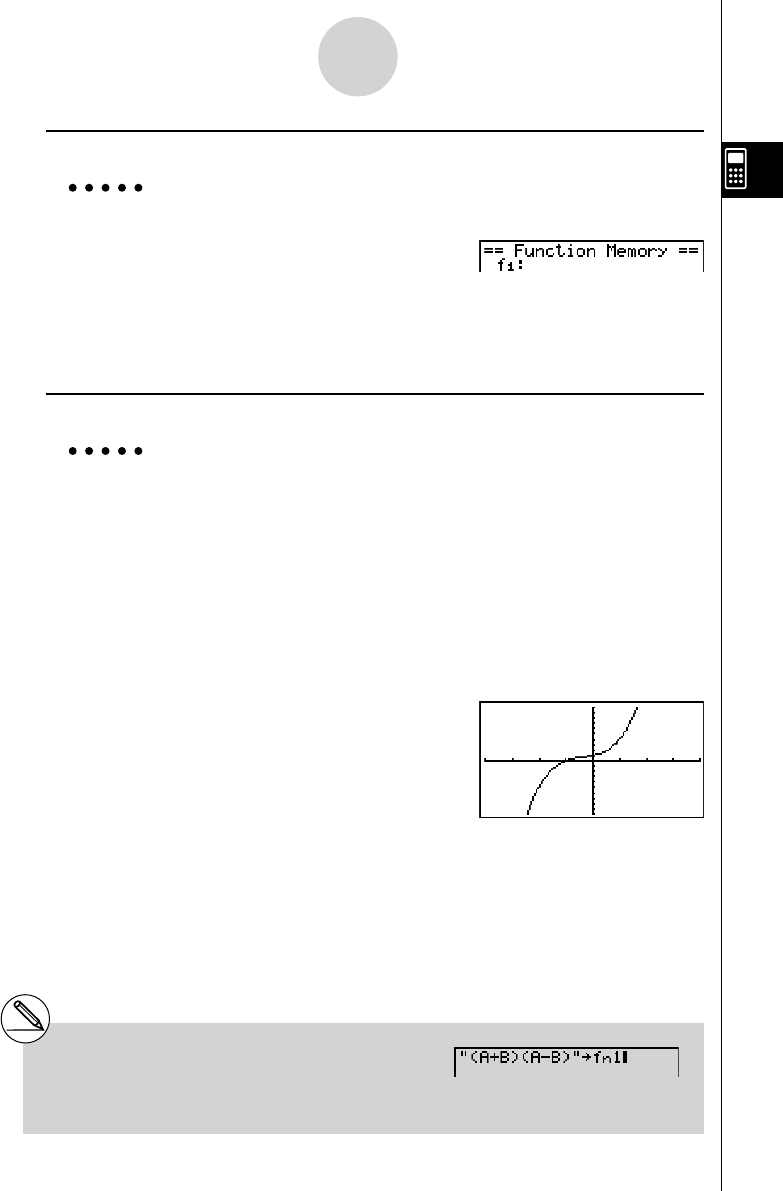User's Manual
Table Of Contents
- Quick-Start
- Precautions when Using this Product
- Contents
- Getting Acquainted— Read This First!
- Chapter 1 Basic Operation
- Chapter 2 Manual Calculations
- Chapter 3 List Function
- Chapter 4 Equation Calculations
- Chapter 5 Graphing
- 5-1 Sample Graphs
- 5-2 Controlling What Appears on a Graph Screen
- 5-3 Drawing a Graph
- 5-4 Storing a Graph in Picture Memory
- 5-5 Drawing Two Graphs on the Same Screen
- 5-6 Manual Graphing
- 5-7 Using Tables
- 5-8 Dynamic Graphing
- 5-9 Graphing a Recursion Formula
- 5-10 Changing the Appearance of a Graph
- 5-11 Function Analysis
- Chapter 6 Statistical Graphs and Calculations
- Chapter 7 Financial Calculation (TVM)
- Chapter 8 Programming
- Chapter 9 Spreadsheet
- Chapter 10 eActivity
- Chapter 11 System Settings Menu
- Chapter 12 Data Communications
- Appendix

20070201
2-2-4
Special Functions
u To delete a function
Example To delete the contents of function memory number 1
A K 6 (g )6 (g )3 (FMEM)
1 (STO)b w
• Executing the store operation while the display is blank deletes the function in the
function memory you specify.
u To use stored functions
Example To store
x
3
+ 1, x
2
+ x into function memory, and then graph:
y = x
3
+ x
2
+ x + 1
Use the following V-Window settings.
Xmin = – 4, Xmax = 4, Xscale = 1
Ymin = –10, Ymax = 10, Yscale = 1
!m (SET UP)ccc 1 (Y=)J
Av M d+b K 6 (g )6 (g )3 (FMEM)1 (STO)b w (stores (
x
3
+ 1))
JAvx + v1 (STO)c w (stores (
x
2
+ x ))
JA!4 (SKTCH)1 (Cls)w
5 (GRPH)1 (Y=)
K 6 (g )6 (g )3 (FMEM)3 (fn)b+
3 (fn) c w
• For full details about graphing, see “5. Graphing”.
# You can also use a to store a function in
function memory in a program.
In this case, you must enclose the function
inside of double quotation marks.










